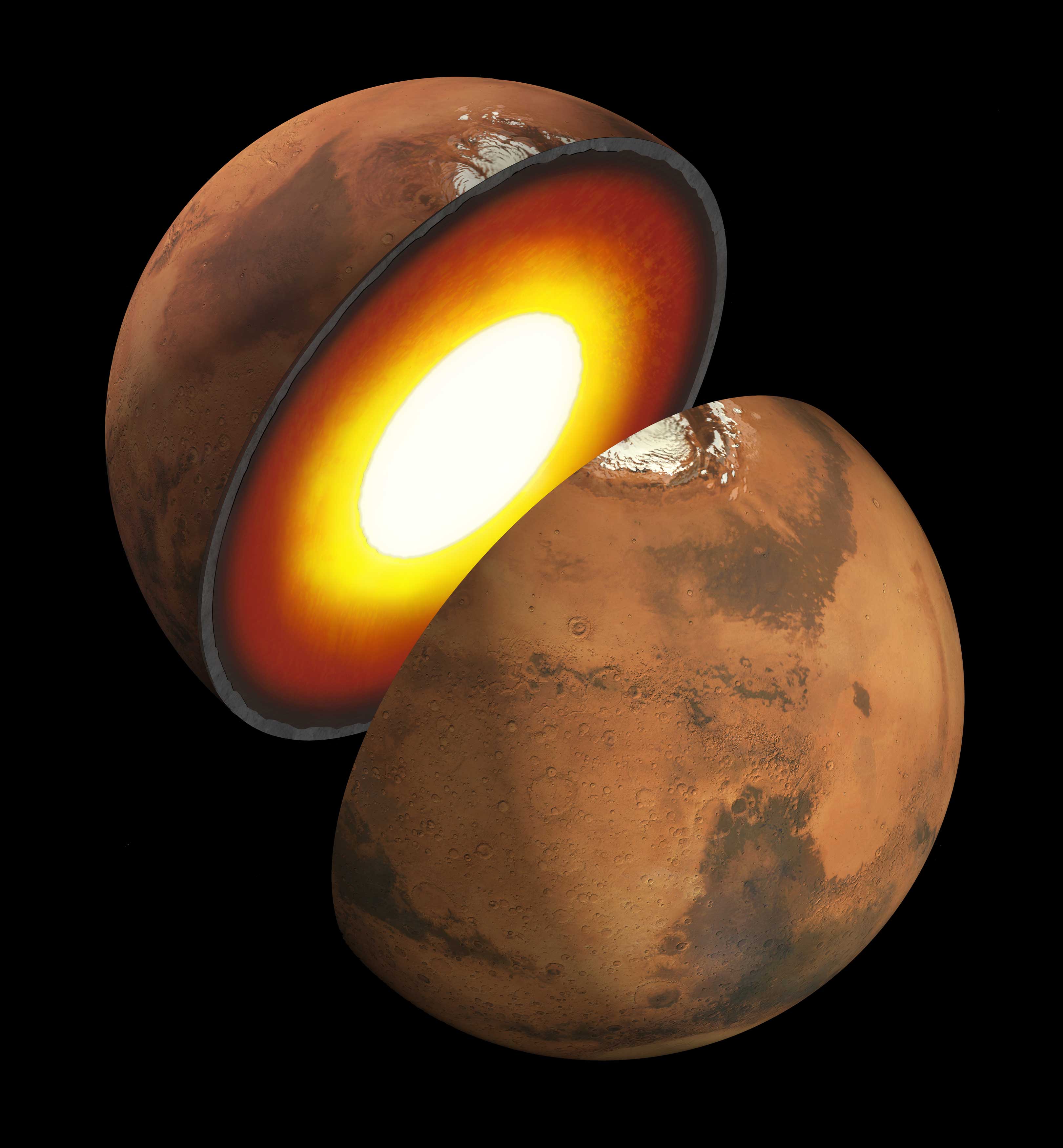
NASA has sent missions to Mars since the mid-60s, but Mars’ interior has remained hidden from view. The InSight mission has begun to lift the veil to reveal a world with active quakes, shedding light on Mars’ ancient history, but the grand successes have also come with frustrating failures.
Oh, Bury Me Not Under Cold Ares
The Interior Exploration using Seismic Investigations, Geodesy and Heat Transport (InSight) mission launched on May 5, 2018. After cruising through space for seven months, the lander touched down on Mars’ surface on November 26, in the vast Elysium Planitia province. InSight carried a variety of instruments to explore both Mars’ interior and its lower atmosphere.
After deploying the Seismic Experiment for Interior Structure (SEIS) seismometer, InSight tried to deploy the Heat Flow and Physical Properties Package (HP3). Since this probe was to measure heat coming from deep within Mars, it was carried within a self-burying drill (the Mole) designed to dig 5-meter (15 feet) down. Unfortunately, the soil around InSight turned out to be looser and more slippery than expected. So after two years and only 40 cm (16 inches), NASA engineers gave up on getting the Mole to bury itself.
Where the Marsquakes Growl, Growl Weakly
Thankfully, that mole hill didn’t grow into a mountain, and InSight’s other instruments have functioned beautifully. InSight’s meteorological instruments detected strong wind gusts characteristic of dust devils, which frequently stalk Mars’ dusty plains. InSight’s seismometer also detected vibrations caused by wind, giving us the first recorded sound of wind blowing on Mars.
Of course, InSight’s seismometers were sent to study marsquakes, and since landing, InSight has detected hundreds. Scientists have focused on a handful of the strongest quakes, which still registered only about 4 on the magnitude scale (about the weakest quake a human can feel). The quakes originated from Cereberus Fossae, a region with enormous valleys about 1,600 kilometers east of InSight.
As these subterranean rumblings reverberate within and along the surface of Mars, they reflect and refract around features in Mars’ interior. By measuring the type and timing of quake waves, scientists can determine the structure of Mars’ inside, similar to imaging a baby using ultrasound. So far, they’ve found that Mars’ metallic core is about 1,830 kilometers (1100 miles) in radius — Mars’ total radius is 3,400 km (2,100 miles), so the core makes up about half, very similar to Earth’s core.
These Quakes Reveal Mars’ History

The size and composition of Mars’ interior tell the tale of ancient Mars. Its atmosphere is too thin and cold to allow liquid water, but Mars’ surface is littered with ancient lake beds and river channels. Missions including NASA’s MAVEN mission (currently in orbit around Mars) clearly show that Mars’ atmosphere is escaping into space, largely driven off by the solar wind. Earth’s magnetic field protects our atmosphere from this solar abrasion, but without a magnetic field, Mars atmosphere is exposed to the elements.

The same metallic motions within Earth’s core that produce our magnetic field must once have operated on Mars. But how strong and for how long are mysteries locked away in Mars’ interior. As InSight continues to detect quakes and unearth Mars’ interior structure, scientists will better understand how two planets, so alike in infancy, could have diverged so dramatically.
Planetary scientist Emily Lakdawalla writes about how Mars missions probe the red planet in her book The Design and Engineering of Curiosity: How the Mars Rover Performs Its Job.
